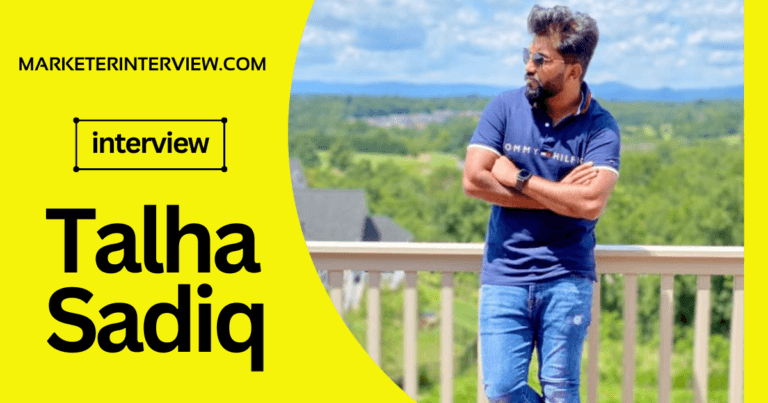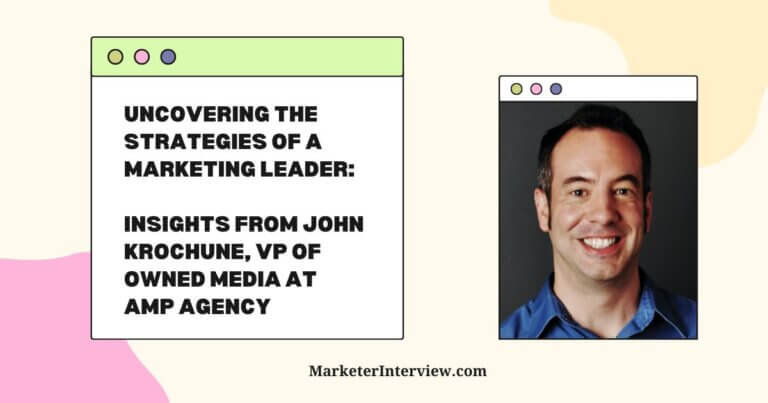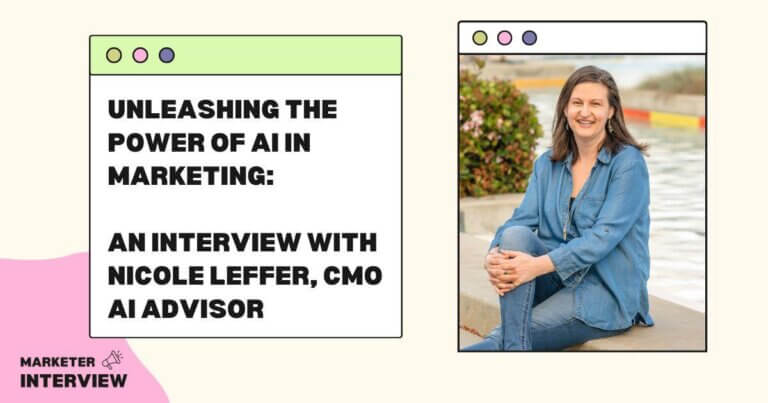Unleashing Marketing Agility: A Conversation with Monica Georgieff
Welcome to Marketer Interview, the premier blog where we delve into the minds of exceptional marketers and uncover their insights, strategies, and experiences.
In today’s interview, we have the privilege of speaking with Monica Georgieff, the EMEA Training and Delivery Lead at AgileSherpas.
With her extensive background in marketing agility and her passion for the Agile mindset, Monica has been instrumental in guiding teams and enterprises through successful Agile transformations.
As a former head of marketing for Kanbanize, she evangelized Agile to marketers worldwide and led her Agile team. Monica’s expertise makes business teams adaptable, goal-oriented, and focused on value-driven approaches.
She is a certified professional in various Agile domains and an authorized instructor with the International Consortium of Agile.
Contents
- 1 Can you share your journey of getting into the marketing field and what sparked your interest in Agile methodologies?
- 2 As the former head of marketing for Kanbanize, how did you effectively introduce and promote the Agile mindset to marketers globally?
- 3 What challenges did you face while leading an Agile team in the marketing domain, and how did you overcome them?
- 4 Could you highlight a specific example where Agile methodologies significantly impacted a marketing campaign or project you worked on?
- 5 What are your primary responsibilities in your current role as EMEA Training and Delivery Lead at AgileSherpas?
- 6 How do you measure the success of Agile transformations in the marketing function, and what metrics or indicators do you look for?
- 7 Can you share valuable lessons you’ve learned from working with Fortune 500 enterprises during their Agile transformations?
- 8 What are the essential tools and software marketers should leverage to enhance their Agile processes and collaboration?
- 9 How do you ensure marketing teams maintain flexibility and adaptability while staying aligned with business goals and objectives?
I am a literature major hired out of university as a software company’s first marketing team member, a jack of all trades.
Lucky for me, this software company developed process management software for Kanban teams and invested a lot in training their team members in this way of work. We were all drinking our champagne if you will!
This was my inauguration into Agile methodologies. I have never done marketing any other way. Having the opportunity to build a team and work in a way that was so cutting edge and becoming more and more popular was incredibly rewarding.
Now, my work is centered around evangelizing this same way of work among marketing and other business teams in enterprises globally.
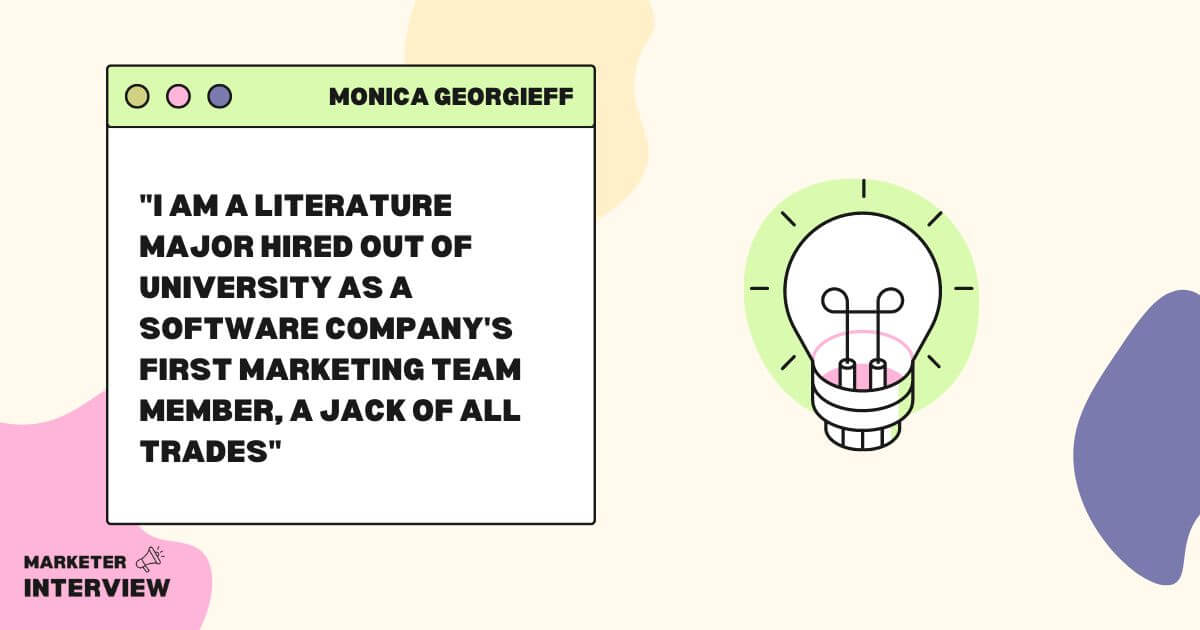
As the former head of marketing for Kanbanize, how did you effectively introduce and promote the Agile mindset to marketers globally?
At Kanbanize, we were marketing a product all teams across industries used to manage their processes.
In this way, we were making a Lean and Agile method (like Kanban) accessible to all types of teams, not just software developers.
At the time, Kanban and Scrum were frameworks used in only a few industries. However, by setting an example with our Kanbanize marketing team to show that this way of work was not just for developers, we could bring more business teams in various industries on board.
I even documented our case study in an ebook called “Lean and Agile Marketing with Kanban” so other marketing teams could follow our blueprint.
What challenges did you face while leading an Agile team in the marketing domain, and how did you overcome them?
The biggest challenge for me was experiment design.
Experiment (or MVP) design requires that the team asks, “What is the smallest thing we could put out there to validate or invalidate our assumption about X?”
A lot of marketers aren’t even aware they’re making assumptions! Designing appropriate experiments that don’t look half-baked and can produce results to help the team decide about the next phase of work is an art and a challenge.
Could you highlight a specific example where Agile methodologies significantly impacted a marketing campaign or project you worked on?
Any Big Bang campaign benefits from being rolled out the Agile way because every campaign will likely require the team executing it to react to specific changes in the environment that affect how the campaign will be received.
I have seen the most significant impact of Agile on campaigns rolled out during the pandemic, where we saw marketing teams at the forefront of the battle to keep brands relevant during rampant changes. Billboards, digital campaigns, videos, you name it…every campaign rolled out in a changing reality needs to seize the change as an opportunity instead of treating it as an inconvenience.
I saw a lot of backlash during the pandemic when some brands chose to roll out pre-pandemic marketing campaigns amidst the chaos that ensued, pretending nothing had changed. Those that pivoted quickly could make a strong impression and achieve their intended impact.
What are your primary responsibilities in your current role as EMEA Training and Delivery Lead at AgileSherpas?
As EMEA Training and Delivery Lead at AgileSherpas, I lead Agile certification courses, in-person and virtually, for teams and leaders.
I also work with Fortune 500 enterprises, mainly in the pharmaceutical and banking sectors, to support their marketing and other business teams throughout the initial and advanced stages of their Agile transformation.
Being a Sherpa means working tirelessly at the intersection of business and agility. My role is to guide teams away from chaotic processes that hold them back and towards greater effectiveness and efficiency.
How do you measure the success of Agile transformations in the marketing function, and what metrics or indicators do you look for?
Several metrics indicate the success of Agile transformation, and only one immediately comes to mind.
Yes, business value is essential, but you have a problematic business model if it’s not closely linked to customer value and satisfaction.
Other metrics like faster value delivery, greater efficiency, and sustainability are also related to success from a process perspective.
The employee satisfaction metrics, such as engagement, morale, and likelihood to recommend, are rarely referenced. Without happy employees, it’s hard to achieve long-term business success. These metrics are also vital to understanding whether Agile transformation is happening or is just “Agile theater.”
The Agile mindset is critical in large-scale transformation. And it’s not optional if you want to be successful with this way of work.
In large organizations, there is a lot of hesitation when dealing with uncertainty. So much so that teams and leaders are not used to experimenting or saying that they can’t know how a campaign will turn out before they try it out. In most cases, large organizations will prefer to ignore change rather than put in the mechanisms to enable their teams to deal with it.
Of course, the landscape is changing as more and more Fortune 500 companies are introducing Agile values and principles to their workforce. However, it’s hard to suddenly shift your mentality after so many years (or decades) operating in a certain way. You could introduce many Agile practices and still not reap the full benefits of this way of work if you don’t approach everything that comes your way with a new set of values.
Not underestimating the Agile mindset is my most significant learning from working with Fortune 500 companies.
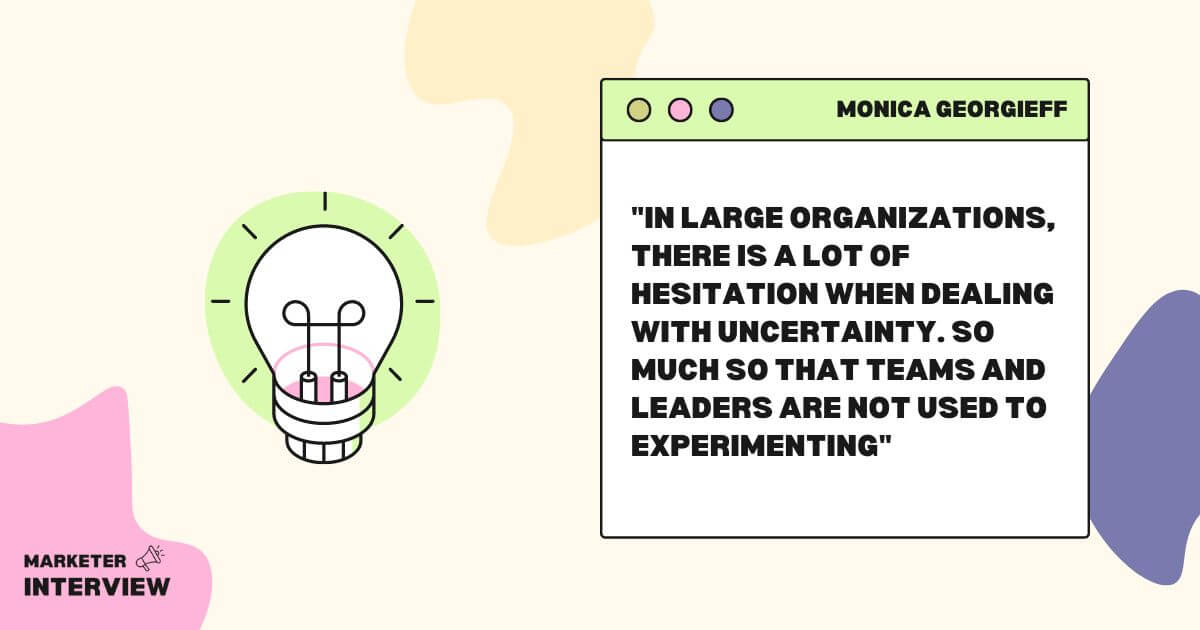
What are the essential tools and software marketers should leverage to enhance their Agile processes and collaboration?
Even though tools are not the most critical part of an Agile implementation, they certainly help.
I recommend tools like Quantive for tracking OKRs on the strategic level, Asana or Jira for process management on the team and leader levels, and tools like ScatterSpoke or TeamRetro to capture valuable insights from your retrospective meetings.
How do you ensure marketing teams maintain flexibility and adaptability while staying aligned with business goals and objectives?
Business goals and objectives are meant to be direction – they represent where we want to go as a business.
However, they are strongly correlated with creating customer value and satisfaction. In that case, teams should be able to achieve business objectives if they are customer-centric.
This is where flexibility and adaptability come into play. Flexibility is an asset when customer value is the goal because customer demand and circumstances are constantly in flux. How customers perceive brands and adopt channels is a rapidly changing area that marketers ought to adapt daily to provide the best experience and exceed customer expectations.
Business goals are a North Star that doesn’t change too often. However, customer-centric campaigning is so in flux that you’d rarely find two campaigns precisely the same.
In some ways, it’s a question of daily team execution (flexible and adaptable) and overarching business strategy (more long-term and stable).


